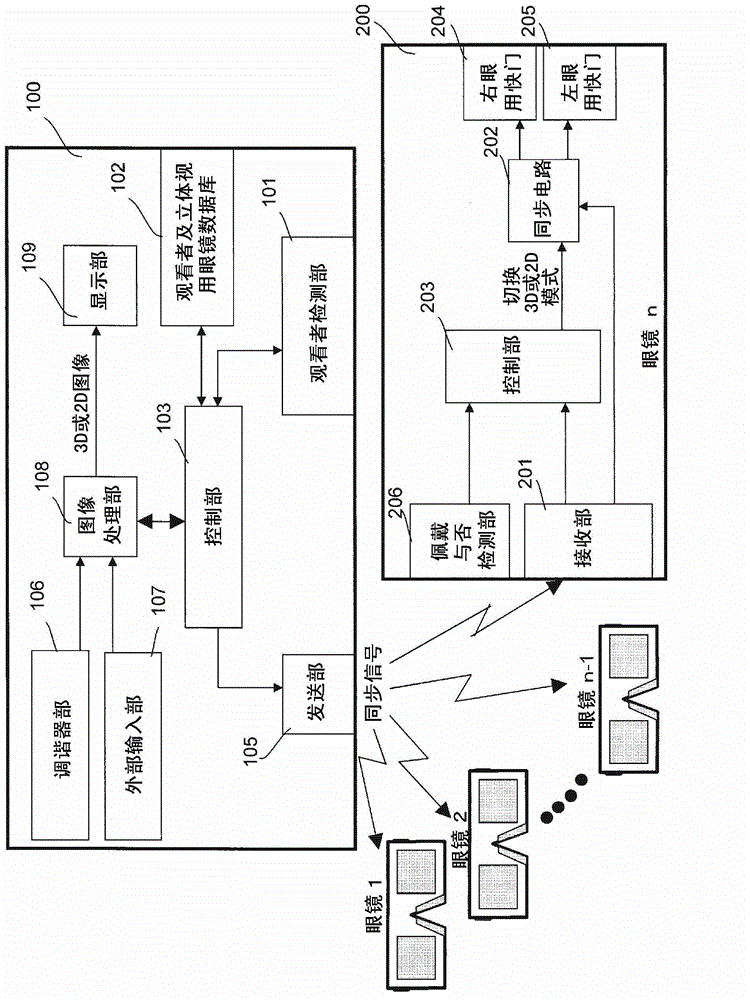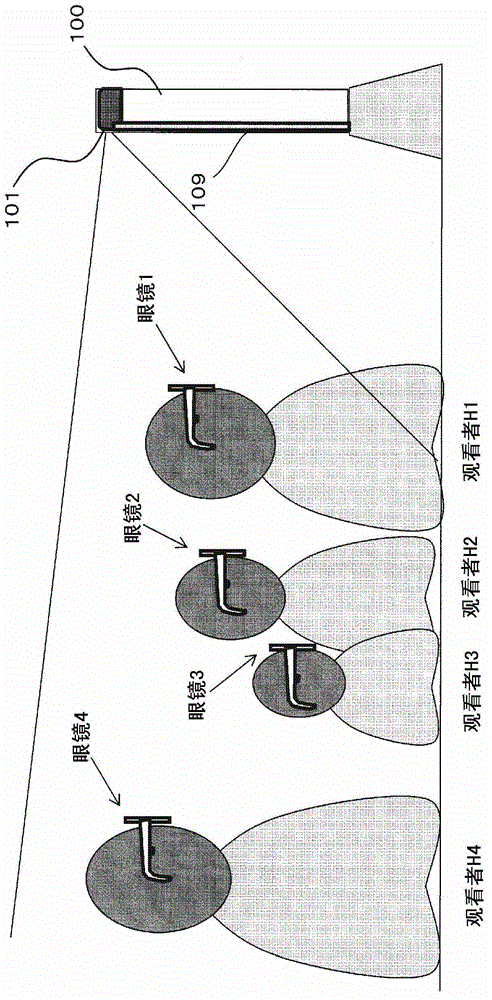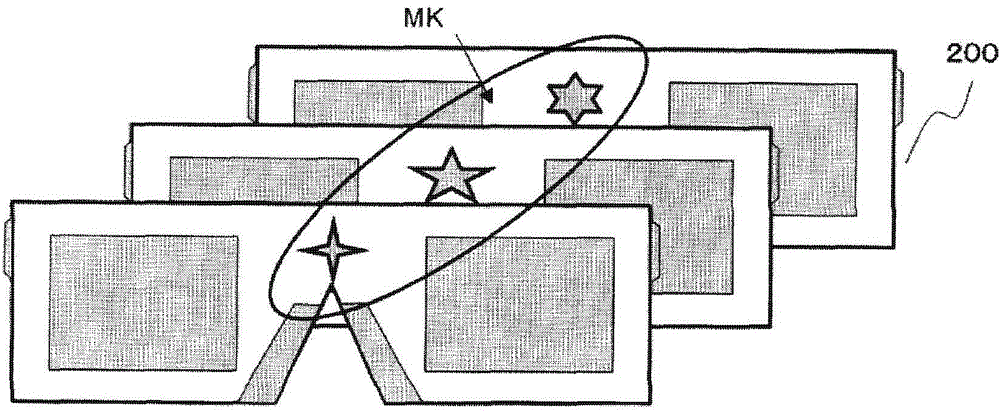Stereoscopic image display device and stereoscopic vision glasses
A stereoscopic image and display device technology, applied in stereoscopic systems, image communication, stereophotography, etc., can solve problems such as increased protrusion and depression
- Summary
- Abstract
- Description
- Claims
- Application Information
AI Technical Summary
Problems solved by technology
Method used
Image
Examples
Embodiment 1
[0060] figure 1 It is a functional housing showing the configuration of main parts of the stereoscopic image display device 100 according to one embodiment, and a functional block diagram showing the configuration of main parts of the stereoscopic viewing glasses 200 .
[0061] The stereoscopic image display device 100 includes: a viewer detection unit 101 for identifying the viewer and the stereoscopic glasses 200 worn by the viewer; and the stereoscopic glasses database 102; the control unit 103; a synchronous signal for synchronizing the display timing of the right-eye image and the left-eye image of the 3D image, switching the viewing mode of the stereoscopic glasses 200 to 3D mode or 2D mode control signals and the like are transmitted to the transmission unit 105 of the stereoscopic glasses 200 ; the tuner unit 106 for receiving broadcast waves; and the external input unit 107 for connecting external input signals.
[0062] In addition, the stereoscopic glasses 200 inc...
Embodiment 2
[0096] Embodiment 2 relates to an embodiment in which priorities are set for a plurality of viewers or a plurality of stereoscopic viewing glasses 200 when a plurality of viewers view a 2D image or a 3D image through the stereoscopic image display device 100 . The stereoscopic image display device 100 specifies a viewer with a higher priority or the stereoscopic glasses 200 with a higher priority, and displays on the display unit 109 an image related to the specified viewer or wearing the specified stereoscopic glasses 200 The viewer corresponds to the image of the mode.
[0097] A viewer table and a glasses table are stored in a predetermined area of the storage unit, that is, the viewer and stereoscopic glasses database (database) 102 . The viewer table is a table for managing attributes of viewers. The glasses table is a table for managing attributes of the stereoscopic glasses 200 . Next, the viewer table and the glasses table will be described in detail.
[0098] F...
Embodiment 3
[0155] Embodiment 3 relates to identifying a viewer who wears stereoscopic glasses 200 with a higher priority among the viewers when the same priority is set for a plurality of viewers, and matching the specified viewer with the same priority. The image of the corresponding mode is displayed on the display unit 109 for example.
[0156] Figure 15 is a diagram showing another example of the record layout of the viewer table 1T. In the priorities of the viewer table 1T of the third embodiment, the same priorities can be stored even for different viewers. For example, Figure 15 The priority of Taro with registration number K=1 and the priority of Hanako with registration number K=4 are both 1. In addition, the glasses watch 2T of embodiment 3 and Figure 8 Similarly, when the glasses 200 for stereoscopic viewing are different, different priorities are set (refer to Figure 8 ).
[0157] Now, let's say you're registered at Figure 15 The viewers whose registration numbers...
PUM
 Login to View More
Login to View More Abstract
Description
Claims
Application Information
 Login to View More
Login to View More - R&D
- Intellectual Property
- Life Sciences
- Materials
- Tech Scout
- Unparalleled Data Quality
- Higher Quality Content
- 60% Fewer Hallucinations
Browse by: Latest US Patents, China's latest patents, Technical Efficacy Thesaurus, Application Domain, Technology Topic, Popular Technical Reports.
© 2025 PatSnap. All rights reserved.Legal|Privacy policy|Modern Slavery Act Transparency Statement|Sitemap|About US| Contact US: help@patsnap.com



